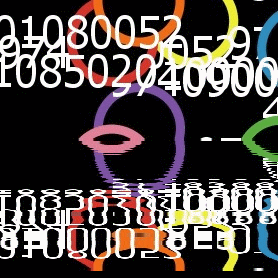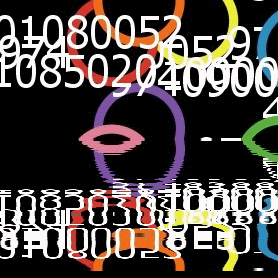HyperMu’NmGA - Effect of Hypermutation Cycles in a NetLogo Minimal Genetic Algorithm (1.2.0)
A minimal genetic algorithm was previously developed in order to solve an elementary arithmetic problem. It has been modified to explore the effect of a mutator gene and the consequent entrance into a hypermutation state. The phenomenon seems relevant in some types of tumorigenesis and in a more general way, in cells and tissues submitted to chronic sublethal environmental or genomic stress.
For a long time, some scholars suppose that organisms speed up their own evolution by varying mutation rate, but evolutionary biologists are not convinced that evolution can select a mechanism promoting more (often harmful) mutations looking forward to an environmental challenge.
The model aims to shed light on these controversial points of view and it provides also the features required to check the role of sex and genetic recombination in the mutator genes diffusion.

Release Notes
For the purpose of demonstration, a web-app version of the model can be accessed via the following URL:
http://modelingcommons.org/browse/one_model/6451#model_tabs_browse_nlw
A preliminary characterization of the model is downloadable here: https://www.academia.edu/88896260/Effects_of_Mutator_Genes_in_a_Minimal_Genetic_Agorithm
Associated Publications
doi.org/10.25937/db7w-zt41
HyperMu’NmGA - Effect of Hypermutation Cycles in a NetLogo Minimal Genetic Algorithm 1.2.0
Submitted by
Cosimo Leuci
Published Jul 31, 2022
Last modified Dec 05, 2024
A minimal genetic algorithm was previously developed in order to solve an elementary arithmetic problem. It has been modified to explore the effect of a mutator gene and the consequent entrance into a hypermutation state. The phenomenon seems relevant in some types of tumorigenesis and in a more general way, in cells and tissues submitted to chronic sublethal environmental or genomic stress.
For a long time, some scholars suppose that organisms speed up their own evolution by varying mutation rate, but evolutionary biologists are not convinced that evolution can select a mechanism promoting more (often harmful) mutations looking forward to an environmental challenge.
The model aims to shed light on these controversial points of view and it provides also the features required to check the role of sex and genetic recombination in the mutator genes diffusion.
Release Notes
For the purpose of demonstration, a web-app version of the model can be accessed via the following URL:
http://modelingcommons.org/browse/one_model/6451#model_tabs_browse_nlw
A preliminary characterization of the model is downloadable here: https://www.academia.edu/88896260/Effects_of_Mutator_Genes_in_a_Minimal_Genetic_Agorithm

